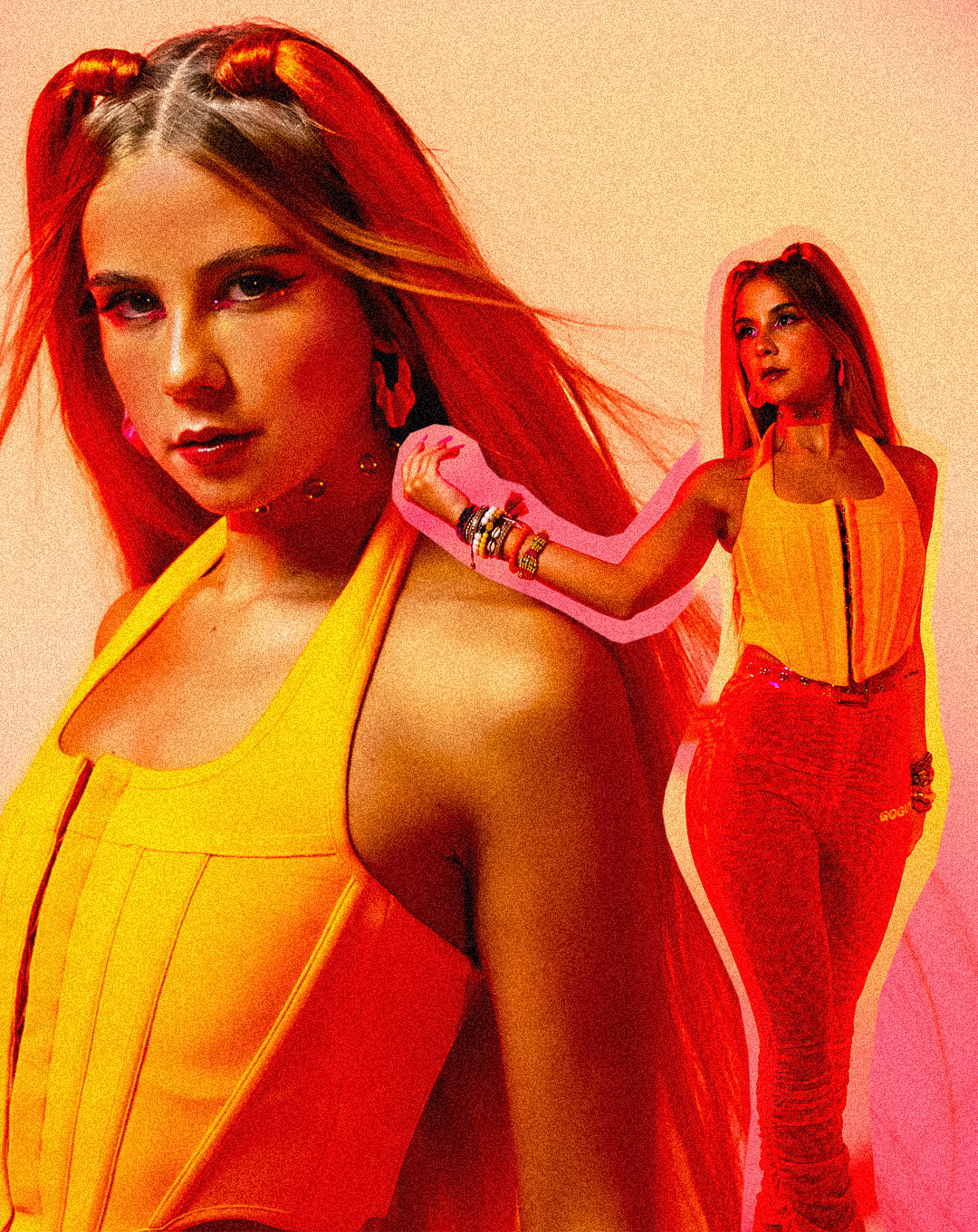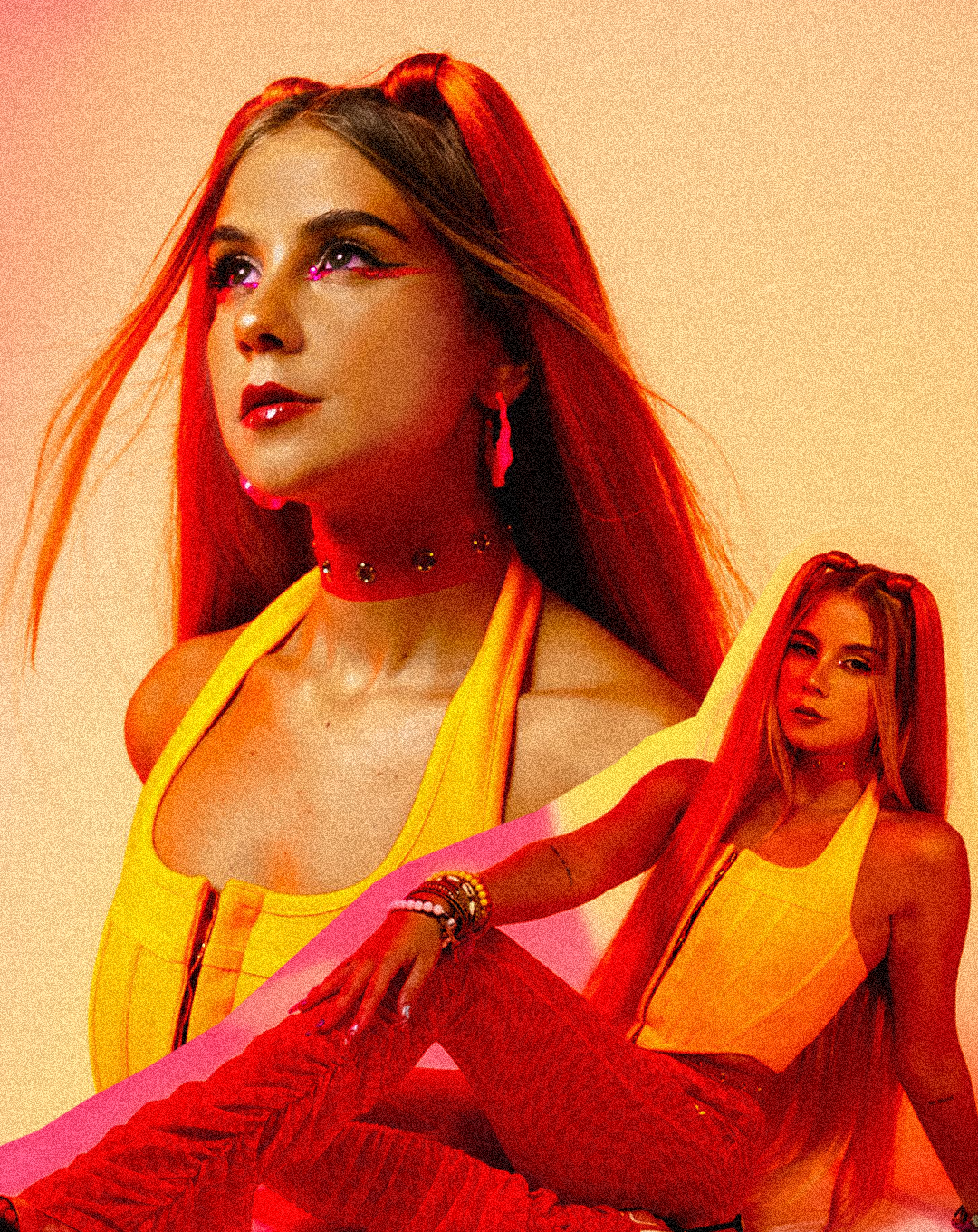Glad Rags: Nonô On Going Back To Your Roots
Get your glad rags on gang! Glad Rags is a column where we chat to some of our favourite musician's about their best garms. This week we’re joined by London-based Brazilian pop artist Nonô!
How important is clothing to you for a stage presence?
What I wear on stage is quite important to me. It has to be something that allows me to move around because I love jumping and being free while I’m performing. It also has to be something quite colourful and bright because I feel like this is what translates my personality the most and what I bring with my songs. ___STEADY_PAYWALL___
Do you have a different style on stage compared to off stage?
I think my day-to-day style is quite similar to my stage outfits. I would say my performance outfits are a bit more extra though and they also don’t include the many layers I use daily to deal with freezing London haha.
Do you think image is important for musicians wanting to be successful?
I believe your style is the first thing people will see and decide if they want to hear what you have to say. Wearing something that represents you and, therefore, represents your music, will help people connect more.
Who are some of your style inspirations as an artist?
Carmen Miranda, Rihanna, Jennifer Lopez, Cher, just to name a few!
What is your favourite piece of clothing to wear onstage and why?
My favourite piece to wear on-stage is my bikini top because it makes me feel like I’m back home in Brazil and it allows me to put on a bunch of necklaces and accessories.
What is your favourite piece of clothing to wear offstage and why?
Usually my day-to-day and stage outfits are quite street style orientated so I love breaking out of the baggy trousers/sneakers vibe when I’m not in work mode. I still wear a lot of colours but from time to time I bust out some skirts or a dress!
How has your style evolved alongside your journey as an artist?
When I moved to London at 18 I was trying to figure out who I was. For the majority of my life, I had been using school uniforms and hadn’t really taken a moment to decide what I actually liked especially in regards to fashion. I’ve always loved styling though. Reading magazines and choosing my favourite outfits or watching Joan Rivers’ Fashion Police on TV really made me aware of all trends. However, after the move, I could actually try out different styles. I quickly realised how colour affects my mood. I moved to the UK during winter and everything felt quite dark and sombre and I really missed how my home in Brazil felt vibrant and colourful. However, there were some elements in the London scene that caught my attention and to this day are a part of my style which I dubbed ‘Urban Beach’. The mix between Rio de Janeiro and São Paulo with London is made by combining vibrant colours, bikini tops, loads of bracelets made in Rio and São Paulo with baggy trousers, chains and platform trainers.
What advice would you give someone struggling to find their image as an artist?
In my opinion a good piece of advice is to go back to your roots. Think about what factor or quality about yourself makes you unique. Also, not every item of your closet has to be extremely rare, it’s more about how you style it that makes a difference.
Do you think there is too much emphasis placed on artists’ personal style in the age of social media?
I believe there can be a big emphasis especially because nowadays, the influencer culture goes hand in hand with the music and movie scene and that makes artists images take more of the forefront. However, I think it has always been this way even before social media. Looking back at Carmen Miranda in the 50s, she became that phenomenon not just because of her talent but also because of her image. There was a lot of focus on how she was this exotic beauty and it was very much due to what she was wearing. In my opinion, the emphasis has always been there and I think it seems more “on your face” due to the fact that we have access to it anytime, anywhere, with a click of a button.


